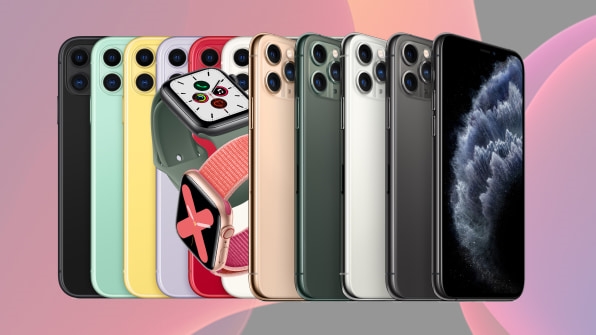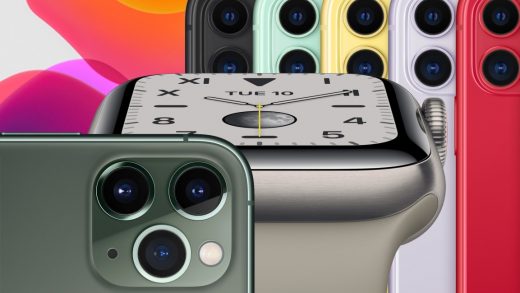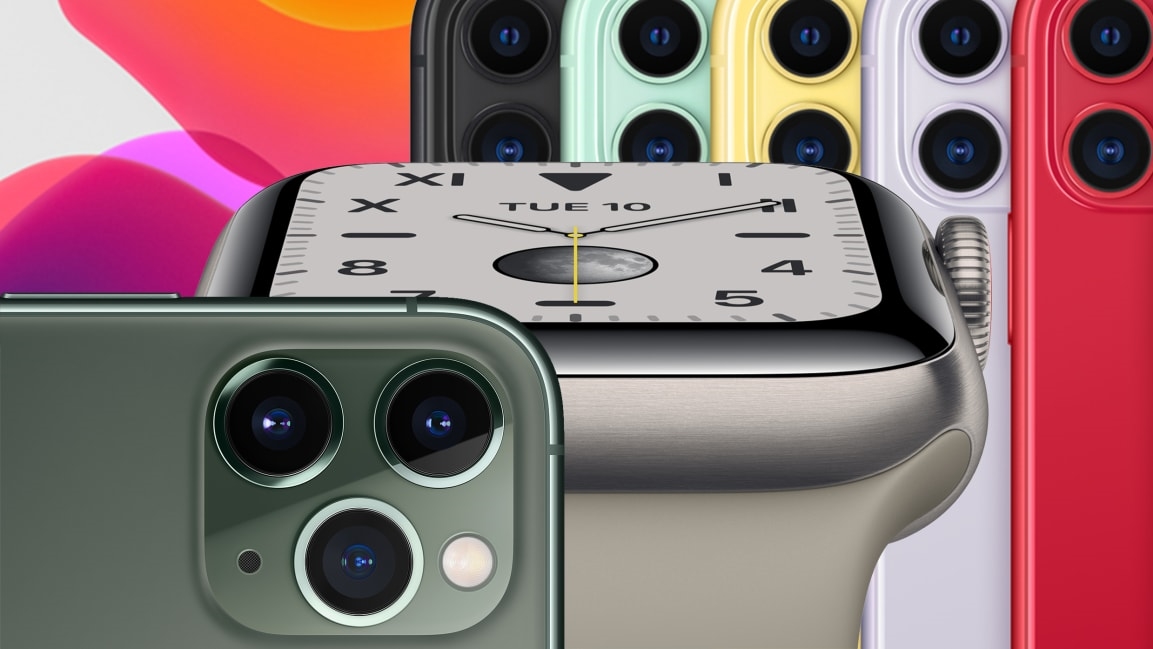4 small details that reveal how design at Apple is changing
Apple’s 2019 iPhone event included announcements of just about everything we expected: The typical cadence of updates to the iPhone (now with three lenses!), Apple Watch (now with a screen that’s on all the time!), and iPad lines (now with, well, more iPad!). But as is usually the case, the story of Apple design is told through the small details, not the big launches. If you want to see how Apple’s design team has evolved over the past few months—both leading up to and after the June announcement that Jony Ive will officially leave the company—it’s worth looking at the day’s announcements not just in terms of what Apple had to say about its new products, but what it left unsaid or simply hinted at. Here are a few key details that suggest design at Apple is evolving.

Apple is colorful again
The era of white, black, grey (and sure, maybe rose gold) gadgets is over for Apple.
The company hinted at this colorful new turn last week, when locals noticed the newly renovated Fifth Avenue flagship store had donned a shimmering, iridescent facade, replacing the austere glass box of yore.
On stage today, Apple execs showed off uncharacteristically colorful new models, the hues of which haven’t been seen since 2013’s iPhone 5c. The new iPhone 11 comes in purple, yellow, red, and seafoam green. The iPhone 11 Pro sports a metal green color too. The boldness of these aluminum cases harkens back to the iPod mini and nano days and the iMacs that preceded them in the late 1990s.
Apple knows it needs to allow customization
When the Apple Card launched earlier this month, people began defacing and customizing their cards almost immediately. Bored by the stark white designs, these fans seemed to desire something more unique and personal. Whether because of changing tastes, the return of maximalism in design, or the fact that Apple is now so ubiquitous, the company’s signature brand of minimalism seems to have reached its zenith.
Today, Apple announced it will launch a customization service in its retail stores called “Apple Watch Studio.” You choose the body, you choose the band, and you walk away with your own take on nearly 1,000 mix-and-match options. Also notable? On another slide later in Apple’s presentation, the company reminded the public that it does free laser engraving on many Apple products.
Apple no longer speaks with Jony Ive’s voice
Despite stepping down as Apple’s VP of Design to launch his own design studio, Jony Ive did show up to the iPhone event today. But something was different: While you could see him, you couldn’t hear him. In the several videos that Apple showed at the event, Ive’s voice was notably absent from the narration. I guess we’ll have to fall asleep to the soft incantations of another, less British brand of ASMR from now on. But jokes aside, Ive spent years introducing his team’s new designs to the public. More than just a changing of the guard, his absence alters the Apple brand itself.
Apple is talking about durability . . . kind of
For many users, the biggest weakness of the iPhone isn’t its battery, connectivity, or camera. It’s its durability—specifically, the glass screen that is beyond-prone to cracking. Today, Apple did everything but actually *say* the iPhone 11 was going to solve the brand’s longstanding durability problems. The company mentioned that the new phones will have the “toughest glass ever” and shared a video of the iPhone falling off a table into a bag, then knocking around in the bag against a tube of Chapstick, of all things, seemingly to nod to the design’s toughness. While a tube of lip balm is not a concrete sidewalk, Apple seems to be advertising the new iPhones as longer lasting without actually claiming it. Whether that’s just marketing or truly improved design, only time will tell.
Apple didn’t show anything shocking on stage, but what it did show off demonstrates that it can and will continue to evolve its product design—which at the moment means mining the self-expression of its late ’90s iMacs to counteract consumer apathy, repairing product flaws long swept under the rug, and discovering its design voice without Jony Ive at the helm. If Apple can do all these things, the next decade of Apple design might be interesting after all.
(29)



